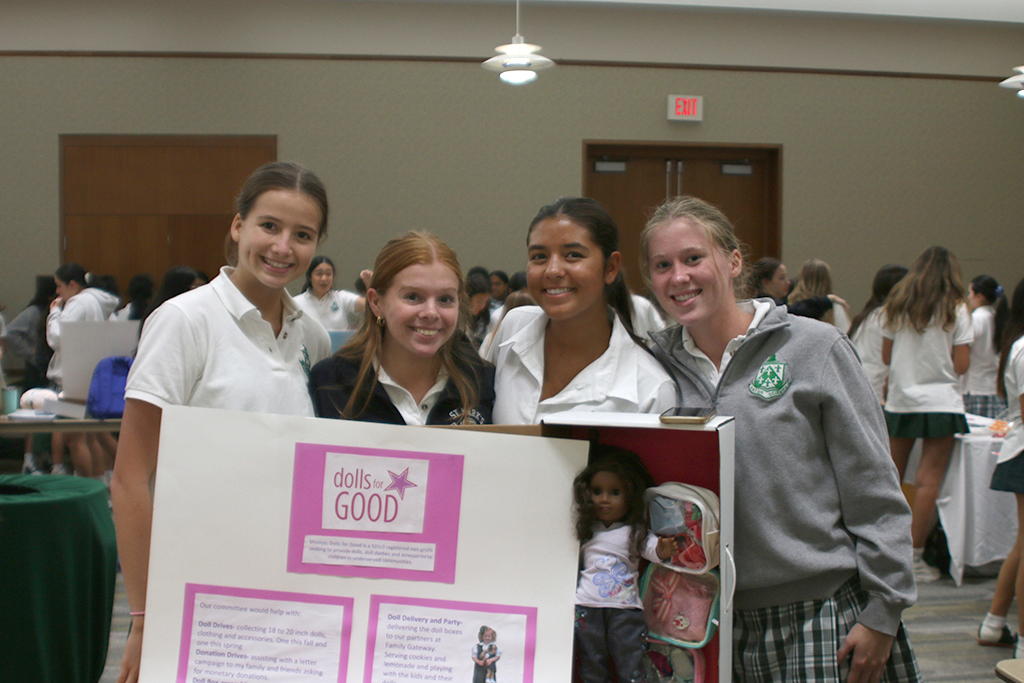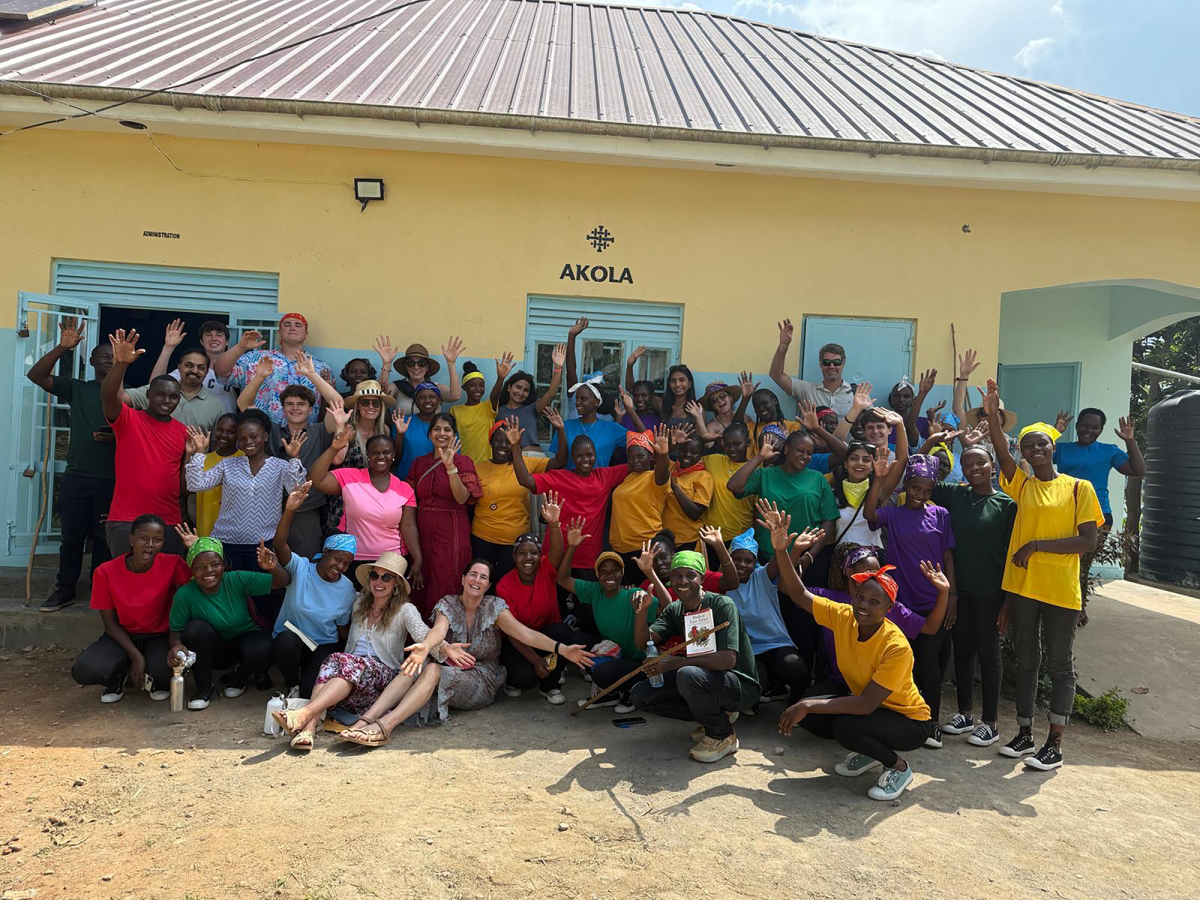//PICTURED ABOVE: Hockaday faculty members work in small focus groups with issues presented by the Hockaday Difference campaign.
Since the arrival of Eugene McDermott Head of School Dr. Karen Warren Coleman, Hockaday has embraced Goodall’s words and made significant changes within the Hockaday community with The Hockaday Difference Strategic Plan: Educating Girls for Extraordinary Lives.
The Hockaday Difference Strategic Plan is an umbrella term for a project devised by the Hockaday administration to solidify Hockaday as a top Independent School.
The project comprises four phases: the original Hockaday 2020 strategic plan; the creation of four goals for the revised strategic plan; the implementation of these goals into work groups; and finally a complete analysis of the school community through the Hockaday 360 campaign.
“The Hockaday Difference is an ambitious roadmap of our school priorities and executing the goals and strategies contained in the plan allows us to build on the vision Miss Ela Hockaday established for her school,” Coleman said.
Phase 1
The first phase began in 2014 with the creation of the Hockaday 2020 plan. This plan was a collection of objectives set for Hockaday between 2015-2020.
However, when Coleman arrived for the 2018-19 school year the Board of Trustees instituted the idea of “continuous planning” rather than a static plan, thus beginning phase two: the creation of the new Hockaday Difference Strategic Plan based on Hockaday 2020.
Phase 2
Coleman and her Leadership Team kicked off phase two with a two-day leadership retreat during the summer of 2018. Throughout this retreat, the Leadership Board reflected on Hockaday 2020 and ways they could improve and revise the goals.
“We sought to create an enduring plan that can guide our priorities and investments for many years, while also being a living document that is flexible and can be updated periodically,” Coleman said.
At the end of the retreat, the Leadership Team presented the draft of the new plan to the Board of Trustees. Once they gathered feedback from the board and faculty and staff, a set of four goals—as well as a new Hockaday vision statement—marked the completion of phase 2.
Phase 3
In phase three of the plan, Coleman launched two work groups to implement these goals— The Quality of the Student Experience Workgroup and the Educational Innovation Workgroup.
The Quality of the Student Experience Workgroup focused on enhancing student experiences. The Educational Innovation Workgroup put its efforts into evaluating the tools the Hockaday education should provide
its students from the time they start at Hockaday to the time they graduate.
Upper School Biology teacher Dr. Katie Croft offered to lead the Educational Innovation Workgroup, realizing the impact it could make on students’ lives.
“We want to be the leader in girls education (not just a leader), and I think the school is very dedicated to taking a hard look at itself and asking what can
we do even better,” Croft said. Croft explained the group used
the Design Thinking Method. To encourage empathy, Croft and her team members had the ability to interview students, parents, alumnae and faculty to understand each unique experience within the Hockaday.
“My partner and I interviewed one faculty member and two students, and in those hour-long interviews just talking to people, I felt so connected to them
as they shared their honest and genuine thoughts,” Croft said.
The Student Experience Workgroup also had the opportunity to shadow students and literally walk a day in their shoes. Physical Education Coordinator Melinda Nunez shadowed Junior Sarah Crow as she proceeded with a normal day at school.
“I think it was a great idea and Coach Nunez asked great questions and truly listened to ideas to improve the student experience,” Crow said.
After empathizing, both workgroups finished their data collection with a summary of information and ways to prototype new ideas.
Croft and the AP Biology Teachers, for example, are prototyping a new way of assessing students this year; there
are no major tests—only low-stakes assessments with feedback. The teachers also are putting an emphasis on the Tenets of Student Excellence in science and teaching their students not to simply memorize content, but also to learn the skills of a scientist.
Phase 4
The fourth and final phase of the Hockaday Difference Strategic Plan is Hockaday 360. In this phase, Hockaday hired an outside firm, The Art and Science Group, LLC to look at Hockaday from every angle—from an external view by consulting heads of other schools, as well as an internal view.
“The information we gather [from Hockaday 360] will help us to understand the value Hockaday provides to students and families and how we can best preserve and enhance that value,” Coleman said.
In the future, as the Hockaday Strategic Plan continues to progress, Coleman, Croft and the administration set their sights on establishing Hockaday as the leader of girls’ education, in addition to molding each Hockaday student into a strong woman.
“You all have been given this amazing gift of education that not many people get to have and we want you all to be confident in yourselves to go out and change the world,” Croft said. “In my own students I see that every day. They are so capable, so knowledgeable and some of them don’t know it yet, so we are doing everything we can to show you the way and lead you to a happy and balanced life.”
Story by Ava Berger
Photo provided by Hockaday Instagram













